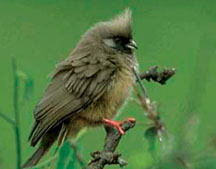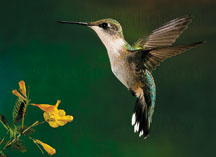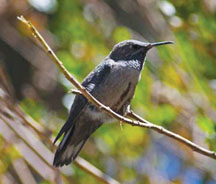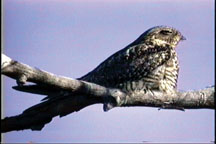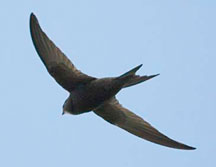|
observer |
|
|
|
|
|
OTHER LINKS |

|

|

|
|
|
|
|
You may be surprised to learn that some animals go through a process similar to hibernation in winter, during unusually elevated (high) temperatures and severe drought conditions. Although less common than winter hibernation, this 'summer hibernation' does occur, and is also known as aestivation. It has been recorded in several animals, and sometimes it could even last for years, in response to droughts.
During aestivation too, the metabolic activity reduces in a marked way, like in winter hibernation. Most animals that aestivate enter a state of inactivity and certain marine species that aestivate make a cocoon for themselves, and stay dormant till the extreme weather condition eases out.
Famous aestivators
What kind of animals are known to aestivate, you may wonder. Well, the most famous aestivators are lungfishes. The most notable among these lungfishes are the West African lungfish and the Congolese lungfish.
|
|
These species normally inhabit swamps and streams. However, when their watery abodes (dwelling places) dry up during hot weather, the lungfish cocoon themselves from the conditions outside; they do so by digging down into the soft mud at the bottom of the waterway.
They create a tubular breathing burrow with a wide chamber at the base. The upper end of the burrow is sealed by a porous lid allowing the inward passage of air. Inside this chamber, the lungfish is well protected from the heat outside.
Even without water, the lungfish will not dry out because it rapidly secretes vast quantities of thick mucus around itself. This mucus hardens to provide a protective cocoon inside the chamber.
|
|
With air filtering down to the chamber, the lungfish can stay entombed (inside a tomb) not just for a few days, but for months, if necessary. As soon as the drought period is over and the swamps fill up, the lungfish will re-emerge from its cocoon. Even the sound of rain falling on the mud can be enough to stimulate a lungfish in a cocoon.
The eel-like South American lungfish is also known to aestivate within a tube-linked chamber in swamp-bottom mud. However, unlike its African relatives, it does not make a cocoon by secreting mucus. Even though lungfishes are generally famous as aestivators, not all can aestivate. The Australian lungfish for instance, ends up dead when the rivers or swamps dry up.
How lungfish obtain food within its cocoon.
During aestivation, the lungfish's metabolic activity falls, like in other hibernating animals. This, and other physiological specialisations help the lungfish to survive what can be long periods of confinement, in a cocoon.
|
|
As the lungfish is unable to obtain food while cocooned, it derives the energy necessary to survive through a process of auto-cannibalism which is known as autophagy. What the lungfish does is, actively digest portions of its own body tissues; its muscles in particular.
What is more remarkable is its ability to withstand (resist successfully) the potentially lethal (deadly) effects of its own highly toxic waste products.
According to researchers, it has been discovered that as a cocooned lungfish cannot discharge its urea, its kidneys recirculate this substance's water content, but retains the toxic component. As a result, lungfish have developed an incredible tolerance level to this toxic.
|
|
They are said to have the ability to store concentrations of up to 20,000 parts per million of urea without any harmful effects. A mere 10 parts a million of urea is generally considered fatal for the vast majority of other vertebrates.
The lungfish flushes its kidneys once it re-emerges from its cocoon into water, by releasing the toxic, and then returns to normal life.
Some of the other summer hibernators are land crabs, earthworms and certain types of land snails, particularly desert dwellers.
|
|
While land crabs generally stay put within their burrows, in a state of dormancy during extremes of temperature, earthworms hollow up chambers in deep soil and coil up inside. Land snails on the other hand, seal themselves inside their shells to avoid harmful effects in dry conditions, secreting a special membrane across their shells' opening that reduces evaporation: They can remain encased for years, if necessary until the rain returns.
****
What is torpor?
Hibernation is the best known mechanism animals use to enter a dormant state to survive extreme cold conditions, but it is by no means the only one. In some hummingbirds, torpor can be considered as a kind of nocturnal (night) hibernation.
|
|
Even though hummingbirds are tiny creatures, they have a high metabolic rate, and as they eat while they are in flight, they expend (use up) a lot of energy on feeding. However, as they are very tiny creatures, in fact, the world's smallest birds, they are unable to store significant amounts of nutrients in their tiny bodies. This does not have an impact on them during daytime, because as long as the environmental temperature is normal, there is sufficient food for them in the form of flower nectar and tiny insects.
But, when night falls, things change ...
As hummingbirds cannot see in the dark to find the food they need, and even if they did, as insects that fly in the night normally conceal themselves in the dark, and nectar is scarce as most flowers close up at night, they would have a hard time to find food. Yet, as hummingbirds have a high metabolic rate and body temperature, they need to eat lots of food to get the energy.
|
|
Without food at night, they could even die, because the environmental temperature falls at night. In order to survive the cold at night, the hummingbirds enter a torpid, dormant state similar to that of winter hibernation.
During this state, their body temperature falls drastically, sometimes by as much as 54 degrees Fahrenheit, in some species. But, you will be amazed to learn that the next morning, when the sun comes up, the hummingbirds are back to normal - their body temperatures are back to day time levels and they go about their typical day-time feeding activities.
The state of torpor which is also known as torpidity is influenced by the environmental temperature. In other words, the higher the altitude of the habitat in which the animal lives, the colder it must become for the animal to enter torpidity.
|
|
For instance, the Andean hillstar which lives in mountainous regions at 3,800-4,200m or 12,500-13,800 ft, enters a torpid state only when the environmental temperature falls as low as 44 degrees Fahrenheit. However, the purple-throated carib, living at heights of less than 5,000 feet above sea level, enters torpidity when the temperature falls to lower than 68 degrees Fahrenheit.
The other avian species that can become torpid for a few days at a time, if necessary, are the African mousebirds, swallows and swifts, especially nestlings. But, this state is not as extreme as the true hibernation displayed by the poorwill, a nocturnal species, the only bird known to hibernate for more than 80 days per year.
Even among the mammalian species, one finds creatures that can become torpid for a time during adverse conditions. The shrew is one such mammalian, and like the hummingbird, though tiny, it also has a high metabolic rate and body temperature. But unlike the hummingbird, the shrews can see at night so they can hunt for food.



